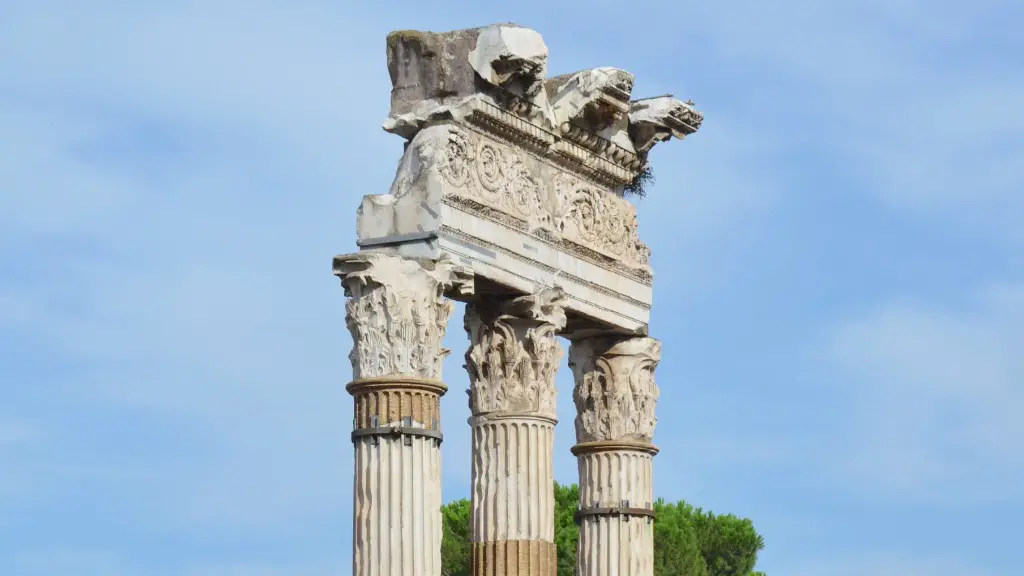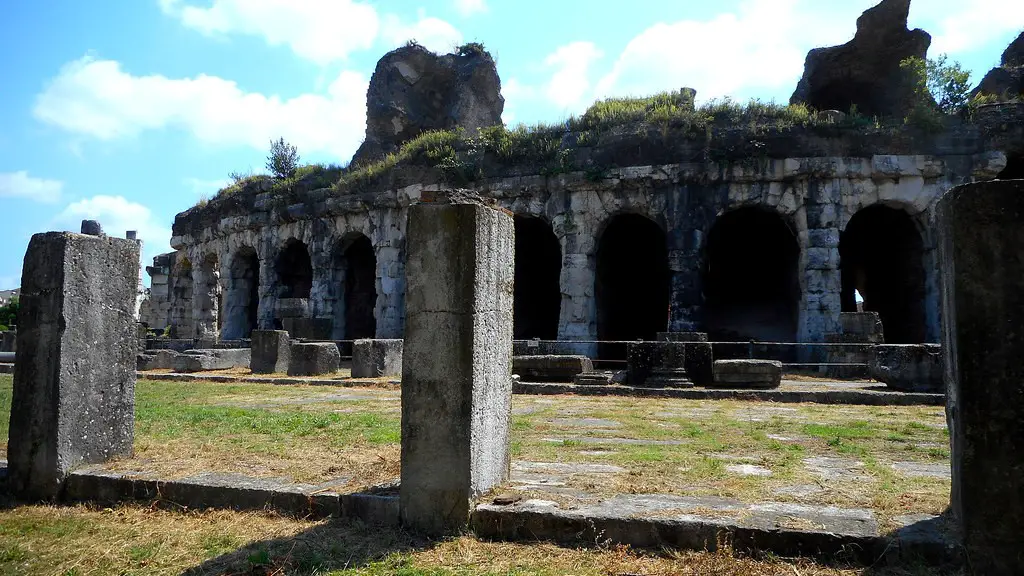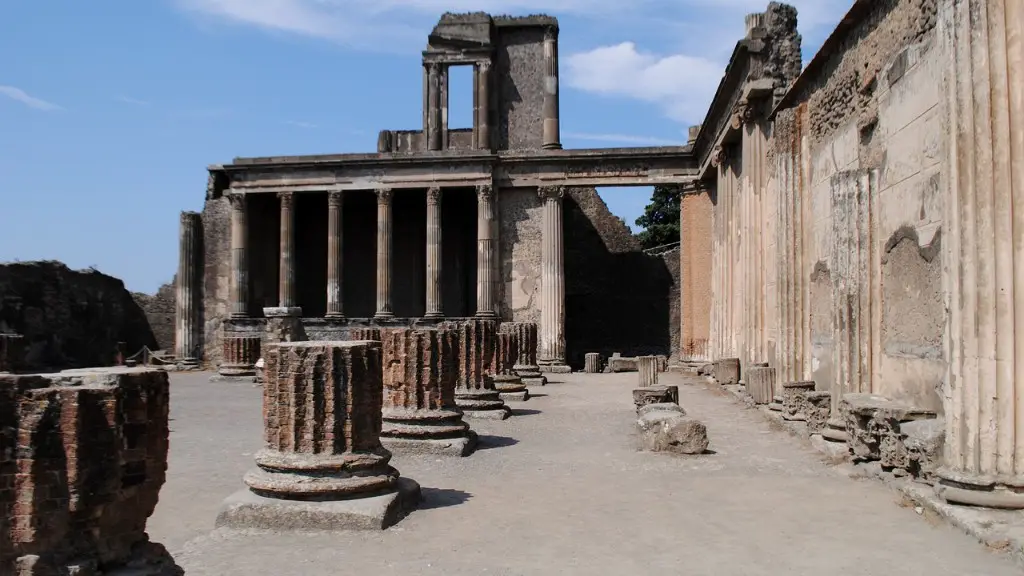Slaves in Ancient Rome lived a wretched existence and were heavily reliant on the whims of their masters. They didn’t possess much in terms of possessions and comforts, and one of the most pressing concerns for them was securing food. Food was often scarce and the slaves were on the lowest rung of the ladder, with the upper-class citizens and wealthy patricians getting first pickings of the best meals. So what would slaves actually eat in Ancient Rome?
The Ancient Roman diet of a slave wasn’t as varied as that of their free counterparts. Slaves were restricted to the cheapest and most basic foodstuffs such as grain and legumes, complemented by olive oil and wine. Fruits and vegetables were also consumed, though these would usually be from the wild or from private gardens. Fish was also a common food source for slaves, depending on the geographical location of their master’s estate.
The staple diet of the slaves was usually oats, wheat and barley, which were cooked as porridge or eaten as unleavened bread. A kind of gruel was often made out of grains and vegetables, spiced with pepper, according to Edward Gibbon in his book, The Decline and Fall of the Roman Empire. A popular dish was a kind of stew called pultes, which was made of wheat or oat flour, herbs, and vegetables.
Slaves in Rome did receive some meat, but it was usually of the low quality variety. According to the Roman cookbook, Apicius, the only meat that slaves may have been allowed to eat was the heads and feet of animals, and bones or scraps left over from the main meals prepared for their masters. Slaves would also have been provided with wine and olive oil. The olive oil may have been used both as a foodstuff and as a spread, to enhance the taste and add nutrition to otherwise plain and regular food.
Slaves ate plain, basic food and were at the mercy of their masters when it came to what they could eat. But they exercised some form of autonomy in the type of food they ate and how they ate it. For example, the slaves in Nero’s villa had their own exclusive dining room, where they were allowed to dine with their families and enjoy the same kind of food as their free counterparts. This indicates that, despite their dire circumstances, the slaves still had a sense of autonomy, control, and momentary pleasure in the lives of Ancient Roman slaves.
Potential Barriers To Obtaining Food For Slaves
Ancient Rome was an extremely hierarchical society and slaves formed the lowest part of the social ladder. Therefore, it was very difficult for a slave to obtain food for themselves. As a result, it was the responsibility of their masters to provide them with sustenance. Despite this responsibility, many masters would approve less than adequate food for their slaves or deliberately starve them in order to save money. This would often lead to malnutrition and even death.
On occasion, slaves would be able to purchase food from the market, but more often than not, they were subject to the whims of their masters. Slaves would also be limited to the food offerings of their master’s estate, which could be geographically restricted. This made it difficult for slaves to obtain food outside of their master’s residence, as they were not free to travel outside their masters’ estates. Slaves were often extremely vulnerable and at the mercy of their masters.
One of the more disturbing aspects of the Roman slave system was the practice of mass starvation. Many slaves were kept in large, crowded workhouses in Rome, undernourished and lacking in access to food. This practice was formalised under Augustus, who was known for his harsh treatment of slaves. It was also a common practice for slave-owners to starve their slaves during summer and winter, leading to heightened malnutrition and suffering, as well as significant reductions in the slave population.
Furthermore, slave-owners often used food as punishment for disobedient slaves. They would deny them access to food for days or weeks at a time, which could lead to both physical and psychological suffering. Slaves were also sometimes forced to eat their own excrement as a form of humiliating punishment.
Food As Symbol Of Status For Slave Owners
Although slaves in Ancient Rome lived in dire circumstances, the upper-class citizens and wealthy patricians would consume extravagant food as a display of their power and wealth. For example, Lucullus, a Roman general in the first century BC, was known for his exceptional feasts. He would serve extravagant guests with lavish food including exotic dishes, wild boar, crayfish, and small sausages, alongside an array of luxurious wines.
These large feasts served an important purpose in Ancient Rome. They were reaffirmations of the power of the patrician class and a blatant display of their social superiority over the slaves. They also provided an opportunity for wealthy Roman citizens to showcase their own opulence, extravagance and affluence, which further reinforced their power and prestige in the eyes of the Roman people.
The contrast between the humble meals of the slaves and the lavish feasts of the wealthy Roman citizens was a powerful illustration of the stringent class divisions in Ancient Rome. The inequality between these two classes was nothing short of immense, and the types of food they ate were a tangible representation of this.
Impact of Slavery On Ancient Roman Cuisine
The practice of slavery had a profound impact on Ancient Roman cuisine. Slaves were fundamental in preparing the meals of their masters, and the type of food they could eat had a direct impact on what their masters would consume. This ultimately led to the development of a unique cuisine, which focused heavily on grain and legumes, as well as other somewhat plainer ingredients such as olive oil and wine.
Furthermore, the practice of slavery was integral to the development of the Roman wine industry. Slaves were often tasked with growing and harvesting grapes for winemaking. They were also heavily involved in producing and transporting wine to various locations across the Empire, which allowed wine to become a popular beverage throughout the lands of Ancient Rome.
The practice of slavery also had an impact on Roman food production. Slaves were largely responsible for gathering and processing food, which enabled the production of certain food products that would not have been possible without their labour. For example, slaves were responsible for much of the grain cultivation and milling carried out in the Roman Empire, which allowed for the widespread production of bread and other baked goods.
Social Significance Of Food For Slaves
Despite their lowly status in Ancient Roman society, slaves had some degree of control and autonomy over the food they ate and how they ate it. Food was often used as a form of currency among slaves, with certain ingredients and dishes being highly desired and valued. This gave slaves a degree of social power and showed them that they were valued, even in the most desperate of circumstances.
Special feasts were occasionally held to celebrate the community of slaves. These feasts were a way for slaves to express their culture, values and humanity, even in extremely oppressive conditions. The consumption of food was often a symbol of unity, resilience and hope among slaves, and was a way of maintaining their dignity and culture, even in the face of extreme persecution.
These feasts were also used to strengthen communication and relationship networks. They provided slaves with an opportunity to socialise and build relationships with fellow slaves, and even upper-class citizens in some cases. With this in mind, it’s clear that food and eating played an important role in the lives of slaves and was far more than a source of nourishment.
Effect Of Slavery On Roman Society
The practice of slavery had an immense ideological impact on Ancient Rome and its society. It served as an example of inequality and oppression throughout the lands of Ancient Rome, and the dire consequences of being born into such a lowly status. Slavery was an integral part of the Roman economy and was a key factor in the advancement and progress of the Roman Empire.
At the same time, slavery was a detriment to the development of the Ancient Roman society. Slaves were consistently oppressed, marginalised and dehumanised by their masters, which ultimately led to their own suffering and the suffering of their families. In this way, the practice of slavery had a profound impact on the lives of both the slaves and their masters in Ancient Rome.
Conclusion
Slaves in Ancient Rome had very limited autonomy when it came to food and eating, and were wholly reliant on their masters for sustenance. Their meagre meals of grains and legumes were in stark contrast to the lavish feasts of the upper-class citizens and wealthy patricians, and served as a reminder of their lowly status and inferiority. Slavery had a significant impact on Ancient Roman society and the lives of the slaves, leading to suffering and oppression on a vast scale. Despite this, food served as a source of comfort, unity and social interaction for the slaves, and provided them with a degree of autonomy and control over their own lives.





